
Tay Ninh province has also planned to organize the teaching of Skô Chhay-dam at schools with many Khmer ethnic students.
Skô Chhay-dam and the development process
Before the 19th century, the Khmer people in Tay Ninh still lived a nomadic life, cultivating fields and exploiting forest products. It was not until after the year of Nham Tuat 1862, when the French came to exploit Tay Ninh, that Khmer villages were formed as administrative units. And now the Khmer are the ethnic minority with the largest population in Tay Ninh.
In the spiritual culture of the people, pagodas are an indispensable part, a place that contributes to preserving culture and teaching Khmer language (currently 100% of Tay Ninh Khmer students go to school from kindergarten to high school), passing on unique Khmer rituals to the next generations. And Tay Ninh has up to 6 Khmer pagodas: Ka Ot, Khedol, Chung Ruk, Svay, Phum Ma, Ta Loi, which are centers for practicing religious rituals and folk festivals.
According to cultural researcher Dao Thai Son (Tay Ninh), when it comes to art education , the most systematic one is the performing art of Skô Chhay-dam (Chhay-dam drum dance) of the Khmer people in Bau Ech (Hoa Thanh ward, Tay Ninh province). On a large scale, Skô Chhay-dam is a special dance, closely associated with the Khmer ethnic people in the South in general, and is an indispensable dance in festivals such as Chol Chnam Thmay, Sen Don Ta, Ooc-om-boc...
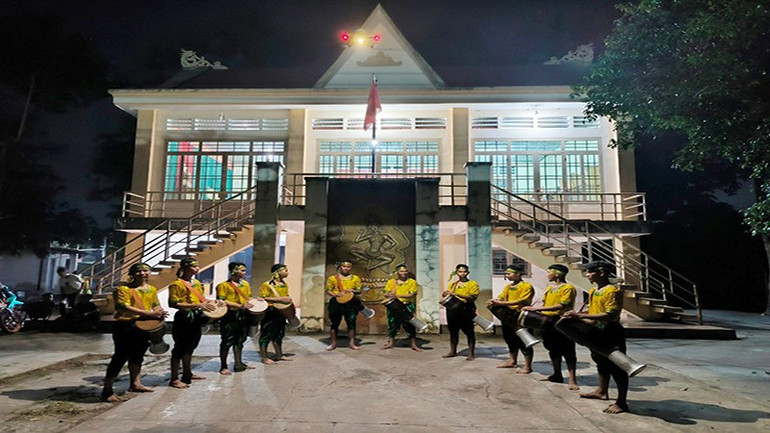
According to the Literature and Arts Association of Tay Ninh province, Skô Chhay-dam in Tay Ninh appeared around 1953, when Prince Sihanouk (Cambodia) presented the Cao Dai Tay Ninh Holy See with a set of Khmer musical instruments including: one lute, two pentatonic lutes, one rice drum, two war drums, one silver snake, and three Chhay-dam drums. At first, the drums were only used to beat the rhythm to serve the rituals of worship; later, gradually, there was a combination of drum dance with dragon and unicorn dance.
“Initially, Skô Chhay-dăm only had drum beats but no gestures, and during the research process, dedicated artists of the Cao Dai Tay Ninh Holy See such as Cao Thi Yen, May Sim, May Tich, Tran Van Xen... successfully created a combination between drum beats and martial arts postures, adding drum beats with elbows, knees, heels, and rolling dances, etc. to create a complete performance as it is today,” researcher Dao Thai Son added.
On June 22, 2015, the Khmer Skô Chhay-dam in Bau Ech, Tay Ninh was recognized as a National Intangible Cultural Heritage. In the cultural preservation strategy for the period 2020-2025, Tay Ninh has also created favorable conditions in terms of human resources and funding to train and teach Skô Chhay-dam to young generations of Khmer people in Tay Ninh. At the same time, Tay Ninh has also included this performance form in community activities and festivals.
Drum dance in "Tay Ninh style"
To perform Skô Chhay-dam in the “Tay Ninh style”, the dance team must have at least 16 well-trained teenagers. The Chhay-dam drum is a type of drum with one side covered with leather, the drum body is made from a hollowed jackfruit or old areca tree trunk. When performing the drum dance movements, beating the drum and combining hand and foot dances, beating the drum with elbows, heels and somersaults… it is like martial arts dance.
And Skô Chhay-dam in the "Tay Ninh style" does not use lyrics like in other localities, but the drum dance gestures will combine with the shouts of the dancers, resonating with the sound to create a majestic, strong atmosphere...
Artist Tran Van Xen shared: “I was taught this subject by the Cao Dai Tay Ninh Holy See in 1969. Compared to other localities, Skô Chhay-dam in Tay Ninh shows its own identity; different from Skô Chhay-dam of the Khmer people in the Southwest in terms of rhythm, melody, sound, movements and even costumes.”
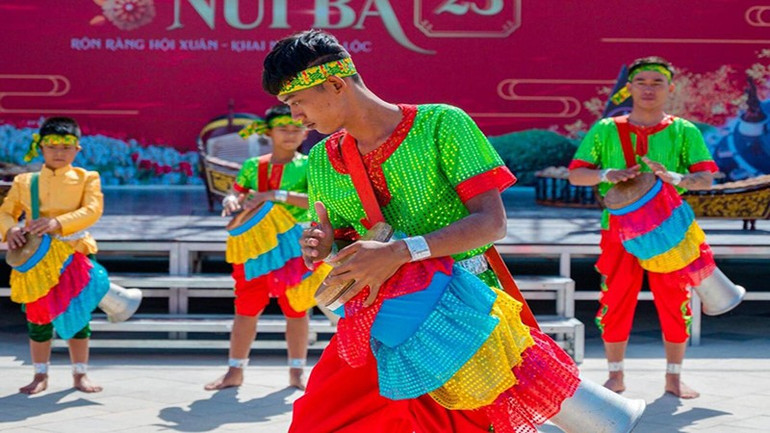
Regarding the sound melody, the Skô Chhay-dam of the Khmer people in Tay Ninh province mainly has the sound of "cắc túm tum", "cắc túm tum" when the dancer hits the joint between the drum wall and the drum surface; the sound "tum tum túp" is when hitting directly on the drum surface..., sometimes fast, sometimes slow, sometimes gentle, sometimes showing strength.
Meanwhile, the Skô Chhay-dăm of the Khmer people in the southwestern provinces has the participation of the Co, T-ro, Khum, Ta Khe, Ronietek, So cua drums, etc. with a steady rhythm, little change, light timbre, and few inversions of beat and rhythm.
Therefore, in terms of sound, Skô Chhay-dam of the Khmer people in Tay Ninh is the sound of drums, bustling, vibrant, expressing the power of martial arts; while Skô Chhay-dam of the Khmer people in the Southwest provinces is a mixture of the sounds of musical instruments, bustling, expressing literature. The disguise in Skô Chhay-dam of the Khmer people in Tay Ninh is like everyday life, close, simple; while Skô Chhay-dam of the Khmer people in the Southwest provinces wears masks, is fictional. Particularly, the movements in Skô Chhay-dam of the Khmer people in Tay Ninh are strong, with choreography like martial arts, the feet are down or move decisively, the hands jump quickly, the body is graceful and somersaults, looking very skillful and beautiful. While Skô Chhay-dam of the Khmer people in the Southwest provinces uses more hand movements than feet.
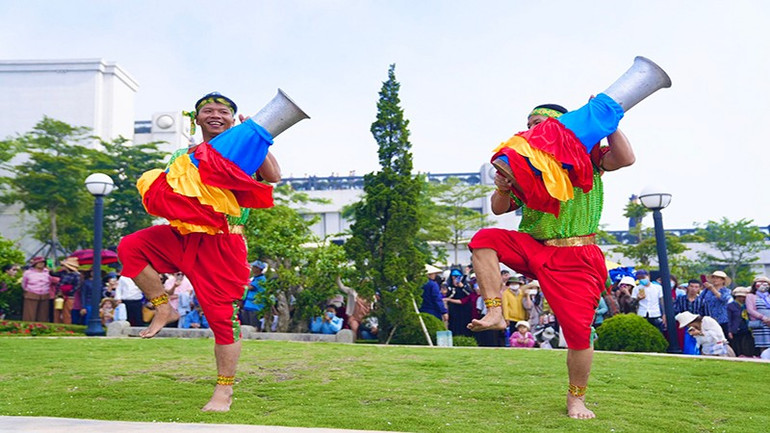
Nowadays, the art of Skô Chhay-dam of the Khmer people in Tay Ninh has developed not only with the first, second, third, and fourth dances but also with the fifth (single dance, two-dance, three-dance, four-dance, five-dance) and more difficult movements; bringing to the audience many attractive, interesting and beautiful experiences. Tay Ninh province has also planned to organize the teaching of Skô Chhay-dam at schools with many Khmer ethnic students.
Comrade Doan Trung Kien, Vice Chairman of the People's Committee of Tay Ninh province, said that art education is an important issue in preserving the national identity of the Khmer people, especially the Skô Chhay-dam. Because this field not only serves the needs of entertainment, but also has profound philosophical and educational significance. Art contributes to the formation and development of personality, soul... and helps people feel right and wrong, perceive good and evil; from there, it will guide people to perfect their personality, develop healthily and civilly.
Source: https://nhandan.vn/sko-chhay-dam-phong-cach-tay-ninh-post914231.html



![[Photo] Ho Chi Minh City is brilliant with flags and flowers on the eve of the 1st Party Congress, term 2025-2030](https://vphoto.vietnam.vn/thumb/1200x675/vietnam/resource/IMAGE/2025/10/10/1760102923219_ndo_br_thiet-ke-chua-co-ten-43-png.webp)
![[Photo] Unique Phu Gia horse hat weaving craft](https://vphoto.vietnam.vn/thumb/1200x675/vietnam/resource/IMAGE/2025/10/10/1760084018320_ndo_br_01-jpg.webp)
![[Photo] "Exposing letters" in the flood center of Lang Son](https://vphoto.vietnam.vn/thumb/1200x675/vietnam/resource/IMAGE/2025/10/10/1760080117518_ndo_br_z7101324112737-07cd4d1c01801a8ccf4ae0cbaf31c4a3-507-jpg.webp)


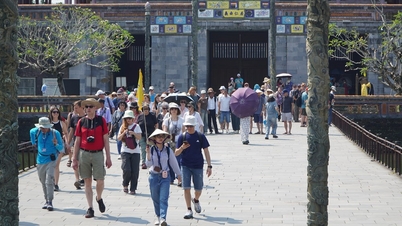







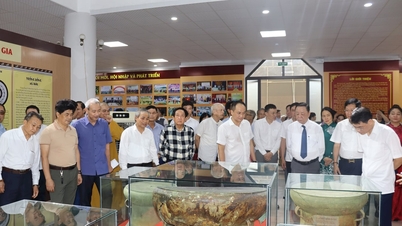







![[Video] Ho Chi Minh City: Many subjects still lack teachers](https://vphoto.vietnam.vn/thumb/402x226/vietnam/resource/IMAGE/2025/10/10/1760108638254_gv-png.webp)






































































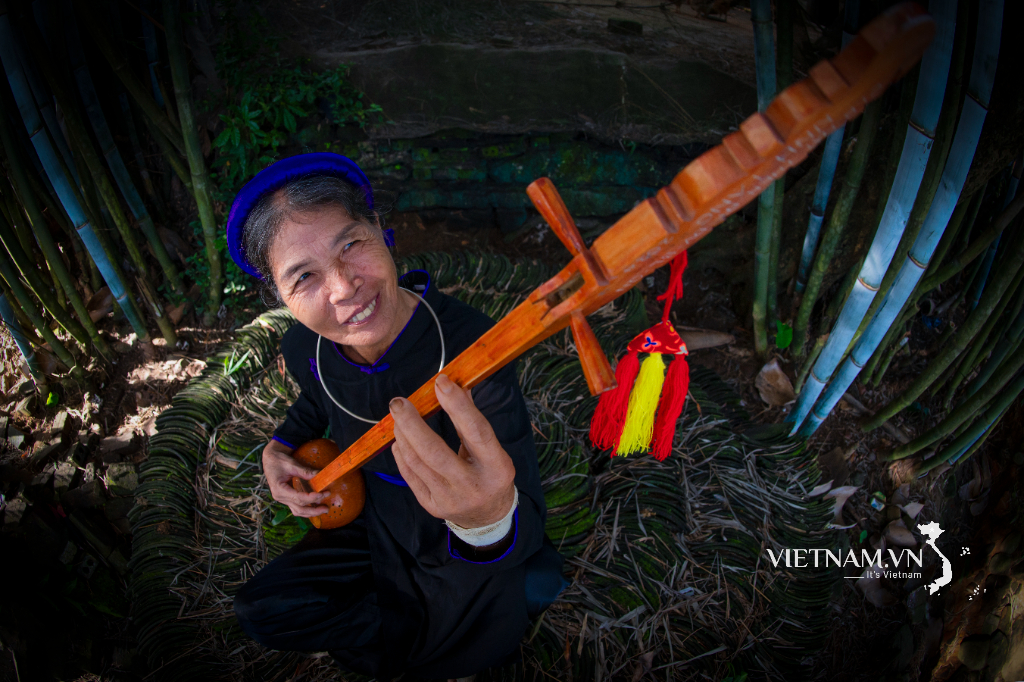
Comment (0)